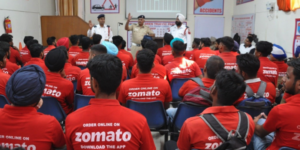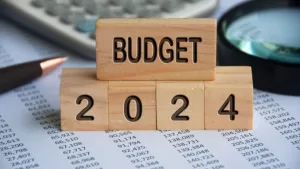The government has announced free foodgrains to 81 crore poor in the country for one year.
This will be under the National Food Security Act (NFSA) but is like an extension of the free foodgrains scheme announced under the Pradhan Mantri Garib Kalyan Yojana (PMGKY) in March 2020, which provided 5 kg of foodgrains to each poor person. It was to cover 80 crore people badly impacted by the pandemic and the complete lockdown.
At that time, NFSA was already in existence and providing subsidised foodgrain to the poor. It covers 75% of the rural population and 50% of the urban population. The number to be covered was estimated to be 81.34 crore. As per the official website of NFSA, 80 crore poor people were getting rice, wheat and coarse grain at Rs 3/Rs 2/Rs 1 per kg.
Reduction in food subsidy
Budget documents reveal that the two schemes together led to a food subsidy of Rs 2.9 lakh crore in 2021-22.
In 2019-20, before the PMGKY scheme was launched, the food subsidy was Rs 1.09 lakh crore. Now the two schemes are being merged into the NFSA with 5 kg of foodgrain provided free to 81 crore poor.
So, the food grain provided under PMGKY will be given to the poor but what they were getting at concessional rates under NFSA will no longer be made available to the poor. Thus, the government will save Rs 1.09 lakh crore of subsidy that went for the cheap foodgrains under the earlier NFSA.
This will become an additional burden on the poor, and it will be much higher than the subsidy saved by the government. The poor will have to supplement their needs from the free market where the price of foodgrains is now much higher than the Public Distribution System price. In 2022, due to an early summer, wheat production and procurement declined. Paddy crops also suffered due to late rains in major rice-growing areas and flooding towards the end of the season.
Poverty will increase
How much will the poor have to buy in the market?
Assuming no leakages, 81 crore people were provided with about 100 million tons of foodgrain out of a production of 316 million tons. Thus, 60% of the population was getting about 32% of the foodgrains from the government and had to depend for their balance needs on the free market. The last consumption survey was in 2011-12 which may be outdated.
According to the Economic Survey, the average availability of cereals in 2019-20 (pre-pandemic) was 13.9 kg per month per person. It indicates the average consumption of foodgrains. The rich supposedly consume less per capita than the poor, but assume that the poor consume the average amount. Then, earlier, the poor had to buy 3.9 kg per person per month from the market and now they will have to buy 8.9 kg per person per month. At the current ruling price of about Rs 2,500 per quintal for wheat, the extra monthly expenditure will be Rs 575 for a family of five.
This does not take into account the lentils that the poor got under PMGKY, which will no longer be supplied.
So, poverty in India will increase. It had already increased due to loss of work and decline in incomes during the pandemic. Importantly, the government has accepted that India has 80 crore poor who need free foodgrains. So, this is a social welfare measure.
How many poor?
The figure of 81 crore poor in India is not far off the mark. The World Bank has raised its poverty line from $1.9 per day to $2.15 per day. That is from Rs 143 to Rs 176 per day at present. Since this is in purchasing power parity terms, it can be taken as Rs 2,650 per month. So, for a family of five it comes to Rs.13,250 per month of family expenditure.
If the Delhi Socio Economic Survey of 2018 is projected to all-India level, 90% of Indian families spent less than Rs 10,000 per month and 98% spent less than Rs 20,000 per month. Of the 28 crore unorganised sector workers registered on the e-Shram portal, 94% reported an income of less than Rs 10,000 per month. Even if two people per family are assumed to be working, the family income would be less than Rs 20,000. The two figures are rather similar.
So, by international standards, 90% of Indians are poor. NFSA, covering 60% of people, actually needs to enlarge its coverage.
Poverty set to increase
In brief, the government’s scheme is going to increase poverty in the country even though 5 kg of foodgrain will be given free.
Now, concessional grain being given would no longer be available and the poor will be forced to buy 64% of their foodgrain requirement from the market at a high price.
Crucially, the government has admitted that there are 81 crore poor in the country. Why such a large number, when the government claims robust economic growth? Either growth is much less or it is highly concentrated in the organised sector.
Actually, both are correct. The nation does not lack resources, but they are increasingly concentrated in the hands of the well-off. The government is increasing concessions to them while cutting subsidies to the poor. Is this justice?
(Arun Kumar taught at JNU and has most recently authored the book, Indian Economy’s Greatest Crisis: Impact of the Coronavirus and the Road Ahead. Courtesy: The India Cable – a premium newsletter from The Wire & Galileo Ideas.)




